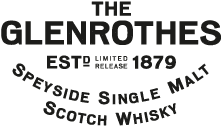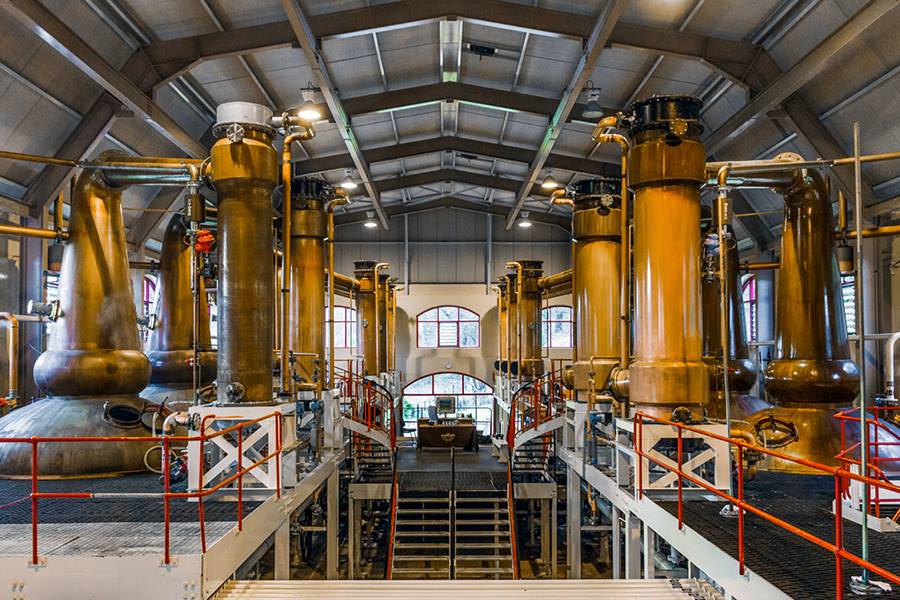Glenrothes distillery information
The Glenrothes was founded by the burn of Rothes in Speyside by James Stuart, Robert Dick and William Grant from the Caledonian bank, and John Cruikshank in 1878, in the middle of a financial crisis. These gentlemen had had great success while owning The Macallan distillery, so three years after they took over that (1868), they figured the time was right to start something slightly bigger in the form of Glenrothes. The crisis however was not very favorable to them, leading to James Stuart & Co being dissolved following the collapse of the Caledonian bank. Stuart decided to remain at The Macallan, and the others gained control over the then half-built Glenrothes-Glenlivet distillery, operating it under the name William Grant & Co.
Their persistence paid off when in May 1879, the distillery opened its doors, with production starting in December on the same night that a bridge collapsed, causing a passenger train to plunge into the icy waters of the Tay River, killing 75 on board . In 1887, the company William Grant & Co. merged with the Islay Distillery Co., who owned Bunnahabhain on the isle of Islay, forming the Highland Distilleries Ltd. In 1896, the capacity of the distillery was expanded to designs of famous distillery architect Charles Doig. Unfortunately, shortly after a fire broke out, destroying a large part of the distillery. After rebuilding finished in 1898, the distillery had four stills, and a second malting kiln had been added. More disaster struck in 1903, when an explosion took place, and again in 1922, when the No. 1 warehouse burnt down, with as much as 2,500 casks destroyed. According to legend, a burning stream of whisky flowed into the burn, with locals attempting to scoop it out for consumption. A fisherman was particularly pleased, claiming that the evening of the fire, he had no issue catching trout intoxicated by the spirit that found its way into the waters.
Glenrothes was not safe just yet, though. The distillery was forced to close between 1917 and 1918, while World War I restricted the availability of barley. Another short period of closure was in 1933, when the American prohibition led to an all-time low in demand for whisky. It reopened shortly after the repeal of the prohibition. In 1962, another fire struck the distillery. It gave a perfect excuse to further expand the distillery, adding another pair of stills for a total of six.Yet another pair was added in 1980. In 1987, Highland licensed The Glenrothes brand to Berry Brothers & Rudd, who owned a share in Cutty Shark blends. A 12 year old official bottling is released in the same year.
After renovating the distillery once more in 1989, yet another pair was added, bringing the total to ten stills. A visitor centre is opened at the distillery in 1991, making it the spiritual home of Cutty Shark. The first release in the “Vintage” malt series is released in 1994. In 1999, William Grant & Sons (owners of the Glenlivet and Balvenie) combined forces with The Edrington Group (owners of The Macallan and Highland Park, among others), and purchased Highland Distillers Ltd. In 2000, overproduction causes the distillery to work 6 months on and 6 months off, in tandem with the Tamdhu distillery. Full production resumed in 2004.
In 2010, The Edrington group sold the Glenrothes brand (though not the distiller) to Berry Brothers & Rudd, in exchange for the Cutty Shark brand.
Glenrothes whisky
The great majority of the whisky produced at Glenrothes is used for Blending, particularly Cutty Shark and Famous Grouse. The whisky is bottled into rounded bottles, lovingly nicknamed “La Bomba”.
The Vintages range currently consists of the following:
- Vintage 1987
- Vintage 1988; matured in a combination of American ex-whisky and Spanish ex-Sherry oak
- Vintage 1991
- Vintage 1994
- Vintage 1995; matured in 30% first fill American Sherry oak, and a mix of first fill Spanish Sherry oak as well as refill casks
- Vintage 1998
- Vintage 2001
- Vintage 1978
- Vintage 1992, Second Edition; matured in a mix of refilled Sherry Butts and American Hogsheads
The Reserves series is exclusively available in travel retail, and consists of the following:
- Sherry cask Reserve; matured in Spanish Sherry casks from Jerez
- Manse Reserve; mostly matured in American oak, with a limited amount of Spanish Sherry casks tossed in the mix
- Elder’s Reserve; 18 Years Old, matured in 50% American oak and 50% Spanish oak
- Minister’s Reserve; 21 Years Old; mostly matured in Spanish oak
- John Ramsay; matured in second-fill American oak sherry casks
- Select Reserve
- Alba Reserve; matured exclusively in American oak refill Bourbon casks
- Robur reserve; mostly matured in Spanish oak first fill Sherry casks, complimented with American oak
- Oldest Reserve; 30 Years Old
Glenrothes also releases Single Casks bottles:
- 1970 Single Cask #10573; matured in an ex-Bourbon hogshead. 179 bottles
- 1977 Single Cask #4859; matured in American oak second fill Sherry butt. Limited to 384 bottles (available in Russia and Taiwan only)
- 1979 Editor’s Cask #3828; ; matured in a Refill Sherry butt
- 1979 Single Cask #13458
- 1979 Single Cask #13459
- 1996 Editor’s Cask #9973; matured in a Spanish oak hoogshead
- 1969 Single Cask #11485; matured in a refill hogshead. 133 bottles
Distillery info:
| Name | Glenrothes |
| Region | Speyside |
| Logo |  |
| Status | Active |
| Founded | 1878 |
| Water source | Ardcanny and Brauchhill ('The Ladies' Well') springs |
| Owned by | Edrington Group |
| Address |
Glenrothes Distillery +44 (0) 1340 872300 |
| Visitor centre | Yes |
| Website | http://www.theglenrothes.com/ |
| https://twitter.com/TheGlenrothes | |
| https://www.facebook.com/TheGlenrothes | |
| Community | N/A |
| Map |
Distillery Setup:
Component |
Capacity |
Quantity |
|---|---|---|
| Mash tun | 4.92 tonnes | 2 (1 Stainless Steel, semi-lauter, 1 Porteus (emergency use)) |
| Washback | 25,500 litres | 20 (12 Oregon Pine, 8 Stainless Steel) |
| Wash still | 12,900 litres | 5 |
| Spirit Still | 15,000 litres | 5 |
| Expected yearly output in LPA (Litres of pure alcohol) | 5,600,000 |
